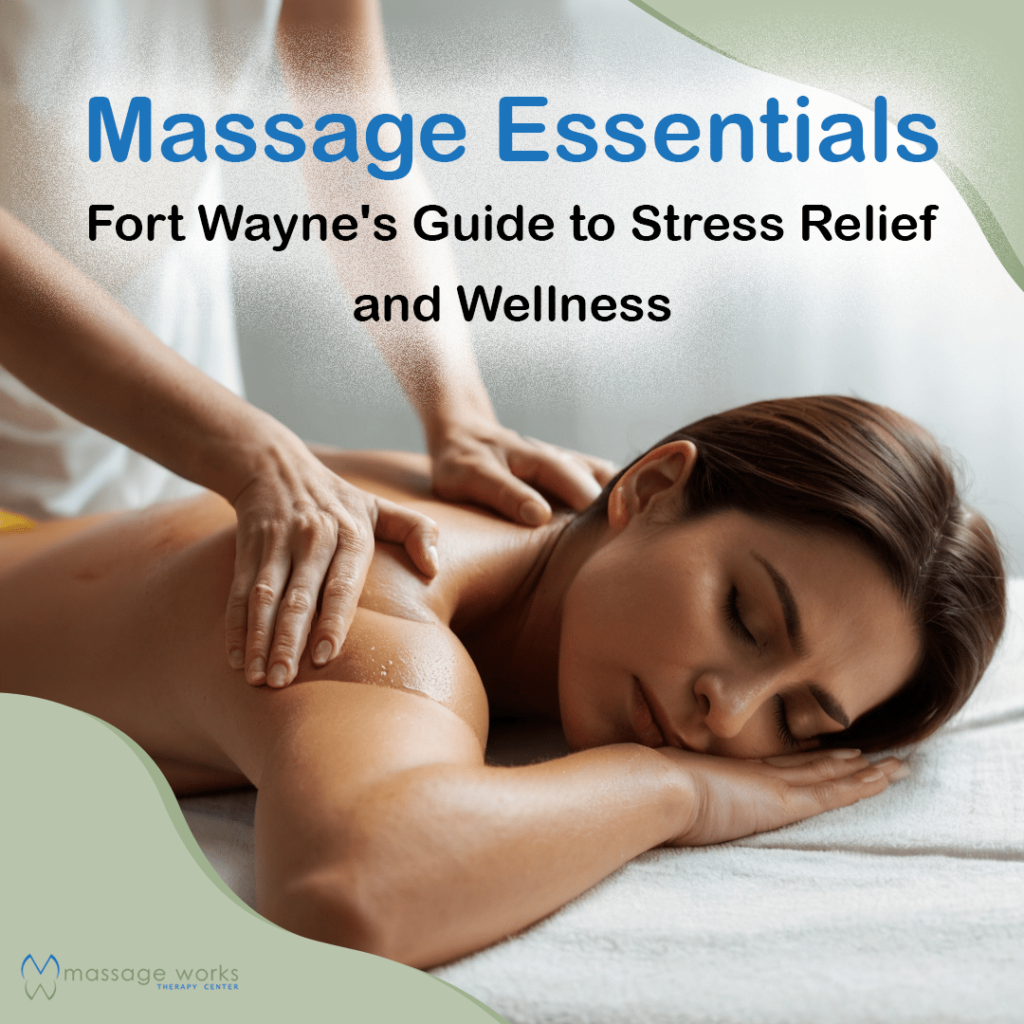
Massage essentials transcend mere relaxation; they’re fundamental to a healthy lifestyle. In Fort Wayne, where stress is omnipresent, Massage Works Therapy Center champions wellness through the transformative power of touch.
The Touch Effect of massage therapy
Human touch is a potent healer, easing tension, releasing tight muscles, and promoting relaxation. Massage triggers positive physiological responses, reducing stress hormones and boosting mood.
Stress Relief & Relaxation with massage therapy
Massage is a stress antidote, lowering cortisol levels and increasing feel-good endorphins. It calms the mind, soothes the nervous system, and restores balance.
Muscle Tension & Pain Relief with massage therapy
Sitting at a desk or engaging in physical activity often leads to muscle tension and pain. Massage targets these areas, alleviating discomfort, reducing inflammation, and enhancing mobility.
Improving Sleep Quality
Massage promotes relaxation, making it easier to fall asleep and stay asleep. Your Quality of sleep is crucial for overall health and your well-being.
Boosting Immunity
Regular massage boosts immune function by increasing white blood cell activity. It reduces stress, supporting a healthy immune response.
Enhancing Mental Clarity
Massage enhances mental clarity, improving focus and productivity. It’s a valuable tool for maintaining peak performance.
Prioritizing Self-Care
In today’s busy world, self-care is essential. Incorporating regular massage into your routine prioritizes your health and well-being.
Conclusion
Massage therapy isn’t a luxury; it’s essential for a healthy lifestyle. At Massage Works Therapy Center, we’re dedicated to helping Fort Wayne residents unlock their wellness potential through the transformative power of touch.
References:
- Field, T. (2014). Complementary Therapies in Clinical Practice, 20(4), 224-229.
- Rapaport, M. H., Schettler, P., & Bresee, C. (2010). Journal of Alternative and Complementary Medicine, 16(10), 1079-1088.
- Munk, N., & Zanjani, F. (2018). Journal of Alternative and Complementary Medicine, 24(1), 42-47.
- Field, T. (2016). Complementary Therapies in Clinical Practice, 24, 19-31.
- Moraska, A., Pollini, R. A., Boulanger, K., Brooks, M. Z., & Teitlebaum, L. (2010). Evidence-Based Complementary and Alternative Medicine, 7(4), 409-418.